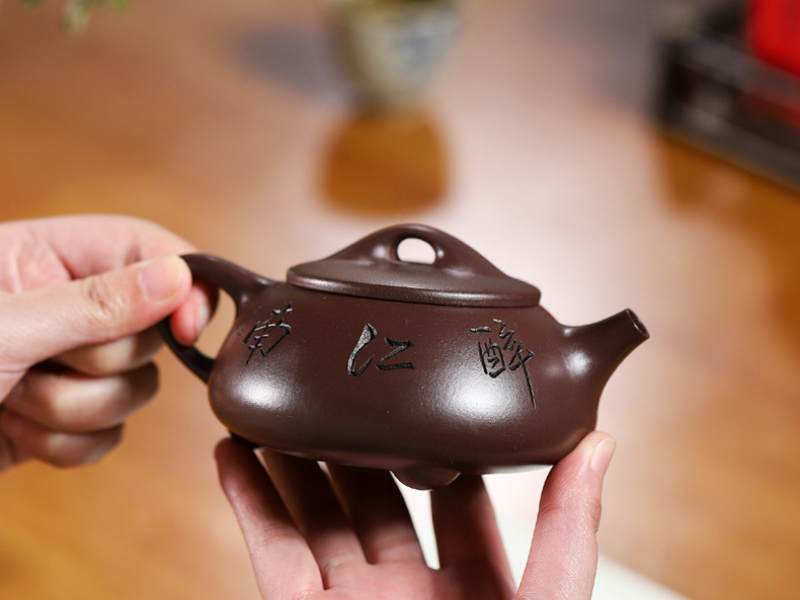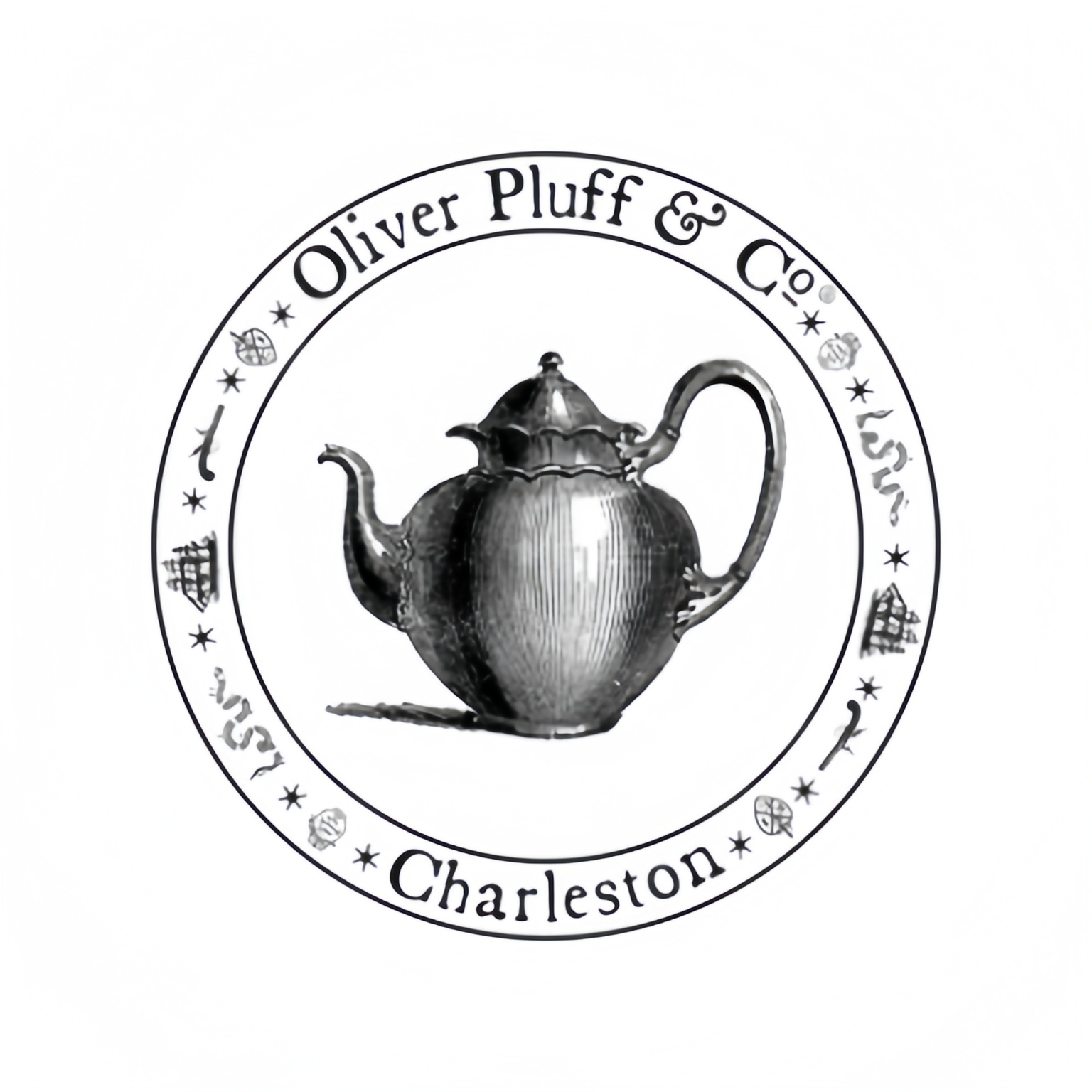Product Detail
Complete guide to Yixing ware teapots
Yixing ware teapots are considered the best in the world. They are made with purple clay, or zisha, a fine and precious clay, peculiar to Yixing. I intend now to write about this wonderful ware.
Traditional Yixing Teapot Designs
The Ancient Dragon
The Ancient Dragon Yixing Teapot’ design and aesthetics are more than functional: they are an embodiment of the strength and wisdom we associate with the dragon in Chinese tradition. From intricate cravings, lifelike dragon relief work, to every part carrying a very unique aura, scales, claws, flowing forms, dragon-like kinks that wrap the teapot. the mystic abstract hovering and convoluting body of the angry dragon brings to the viewer a sense of awe and mystery. The majestic flying dragon that dominates the teapot emits an all-powerful, kingly aura. Likewise the ubiquitous presence of an energy that evokes the lack of an opponent presence, the endless source of power associated to the dragon also permeates the teapots. Ancient dragon represents power; brings good fortune and represents imperial dignity in world civilizations. This image, much appreciated across generations carries a distinct sense of majesty that transcends to the teapot. Dragon embodies power and auspicious to the Chinese, representing imperial dignity as well. Work of dragon image, inscribed by Yixing craftsmen onto cover or body of Yixing teapots, not only renders a venerable and majestic air to the teapots, but confer the sense of being regal and exalted conveyed by its symbolism.

Bamboo Grove Teapots: Tranquillity and unity with nature
Those teapots are inspired by the quiet bamboo woods nature and express a true simplicity. Bamboo grove has the delicate leaf pattern on the body of the teapot, segmented handles that look like a bamboo stem, and an overall aesthetic that contributes to the serene mood of tea preparation.
It is especially recommended for green teas and light oolongs, which will benefit from the gentle brewing environment allowing them to preserve the subtle character of the infusion and the aromatics.
Lotus Flower Elegance: purity and spiritual beauty
While the Lotus Flower teapots have the design elements derived from the sacred flower of Buddhism, the lotus flower, with it’s symbolic and literal purity while rooted in murky waters. The beautiful symetry of the petals, buds, and leaves of the lotus plant are skillfully woven into the sculpture of these teapots, creating vessels of exquisite beauty and deep spiritual meaning.
The Lotus Flower teapots are particularly effective with fragrant white teas and Jasmines. With their graceful elegance and beautiful design, they express the purity, serenity, and meditative qualities of tea brewing to perfection.

Mountain Spring Collection
Tea ware that is inspired by the mountain streams and natural spring water. Mountain Spring teapots have flowing lines, naturally-occuring irregularities of shape and surface, and forms that suggest the way that water moves in nature and/or landscape is shaped by the action of water.
Mountain Spring teawares are ideal for strongly terrior-driven teas, from hight-mountain oolongs to mineral-rich teas.
Imperial Scholar: Refinement and Intellectual Tradition
Drawing inspiration from China’s ancient literary and academic tradition, the Imperial Scholar design is adorned with calligraphic, scholarly, and refined proportions to express the refined aesthetic sense of ancient Chinese literati.
Excels with traditional Chinese teas enjoyed in scholarly tea context, ranging from aged whites to premium oolongs.

Phoenix Egg: Rebirth and Transformation
Named after their characteristic ovoid forms, Phoenix Egg teapots embody the theme of rebirth and transformation that were associated with their namesake mythological bird, Compact, egg shaped, and often segmented decoratively, Phoenix Egg teapots are cherished for their ability to brew strong infusions and make a striking visual impression.
Perfect for concentrated brewing methods and personal tea sessions, Phoenix Egg teapots are suited to strong teas that can benefit from intense extraction.
Meditation Stone: Zen and Mindful Brewing
Reflecting Zen ideas of simplicity and mindfulness, Meditation Stone teapots incorporate smooth, stone like surfaces and forms that encourage a sense of equanimity in tea preparation.
Perfect for Zen meditation practices and mindful tea drinking, Meditation Stone teapots are good for all tea types, but excel in enhancing the ritual aspects of tea preparation.

Moon Palace: Celestial Beauty and Cosmic Harmony
Inspired by Chinese lunar mythology and celestial themes, Moon Palace teapots incorporate crescent shapes, star-like patterns, and otherworldly aesthetics into an otherworldly design that transports tea drinkers into the realm of imagination.
Magical tea experiences and suited to evening tea sessions and aromatic blends.
Prosperity Melon: Abundance and Good Fortune
The melon shape is a symbol of abudance and fertility in Chinese culture. Prosperity Melon teapots possess the rounded, generous forms that subtly hint at plenitude and good fortune.
Excellent for family gatherings, larger tea sessions, Prosperity Melon teapots are suited to hearty teas that can fill a generous capacity.

Brush: Wisdom and Inheritance
The last design in our collection is named after the scholar’s traditional Chinese brush that they used for calligraphy or painting. The design traces the style of the brush, and shows the artistic aspects of the design, making reference to a long tradition of artistic expression in China.
Brush design teapots are ideal for artistic serving of tea, and for celebrating cultural aspects of tea culture.
Application Scenario Expansion
What industries can this be used in?
Yixing ware teapots is used in many different industries and sectors, including:

What Common Problems Can Be Solved?
Frequently Asked Questions
Before using your teapot for the first time, it is suggested to rinse it carefully with clean water, then fill and steep its volume with your tea of choice several times, with discarding the tea afterwards. This, sometimes called “opening the pot”, is believed to rinse away any clay dust and begin the process of developing the teapot’s patina. Since yixing teapots are porous, it is recommended not to use any soaps or detergents. The chemicals will be absorbed by the clay and taint future brewing.

Selection and comparison guide
Yixing Teapot Comparison Table
| Feature | Yixing Clay | Porcelain | Glass | Cast Iron |
| Heat Retention | Excellent | Good | Poor | Excellent |
| Flavor Enhancement | Yes | Neutral | Neutral | Can affect taste |
| Durability | High | Medium | Low | Very High |
| Maintenance | Moderate | Easy | Easy | High |
| Price Range | $50-$5000+ | $20-$500 | $10-$100 | $30-$300 |
| Cultural Value | Very High | High | Low | Medium |
| Tea Compatibility | Specific types | All types | All types |
Data sources: International Tea Standards (ISO 3720:2011), Chinese National Standards for Ceramic Teaware (GB/T 4739-2018) Reference URLs: https://www.iso.org/standard/46032.html, http://www.gb688.cn/bzgk/gb/newGbInfo?hcno=5C8B7B8D9E2F3A1C4B5D6E7F8G9H0I1J
Selection criteria
Real Life Customer Testimonials and Case Studies
Case Study 1: The Tea House Transformation
Client: Golden Dragon Tea House, San Francisco
Challenge: Customers complained that tea was too bitter, and didn’t feel like an authentic experience
Solution: Implementing Yixing teapot service with staff training program
Outcomes: • Customer satisfaction score increased by 40%. • Premium tea sales grew by 25% • Featured in local food magazines for authentic tea experience
“Our Yixing teapots transformed our business. Customers now come specifically for the authentic tea ceremony experience, and our staff takes pride in their traditional brewing skills.” – Linda Chen, Business Owner
Case Study 2: Personal Tea Journey
Customer: Marcus Thompson, Software Engineer
Background: Working professional practicing stress management through tea meditation
Chosen Teapot: Meditation Stone design, 180 ml capacity
Experience: • Established a daily morning tea ritual • Enabled better focus and stress management • Built collection of complimentary Yixing pieces
“My Meditation Stone teapot changed how I start each morning. The ritual of preparation and the enhanced tea flavor create a peaceful moment that sets a positive tone for everything that follows.”
Case Study 3: Cultural Education Program
Institution: Asian Cultural Center, Toronto
Program: Traditional Tea Arts Workshop Series
Implementation: Using a variety of Yixing designs to educate students on the cultural significance
Outcomes: • Over 200 participants in first year of program • Membership grew by 35% • Ongoing cultural exchange programs established
“The Yixing teapots serve as perfect teaching tools, combining practical function with deep cultural meaning. Students connect with Chinese heritage through hands-on experience.” – Dr. Sarah Liu, Program Director
Case Study 4: Therapeutic Application
Setting: Wellness Retreat Center, Colorado
Purpose: Stress reduction and mindfulness training
Approach: Incorporating Yixing tea ceremonies into therapy sessions
Outcomes: • 60% improvement in participants’ reported stress levels • Increased session engagement and participation • Requests for take-home teapot purchases.
The tactile nature of Yixing clay and the meditative brewing process proved particularly effective for anxiety management and mindfulness training.

Conclusion
The Yixing ware teapot is more than a tool, it is a testimony to an unbroken lineage of ceramic invention, cultural tradition, and pragmatic virtuosity through several thousand years of human ingenuity. Be it the Grandiose Ancient Dragon or the Contemplative Scholar’s Brush, every one-of-a-kind teapot offers a tea lover unique benefits and beauty. For those who want to enrich the taste of their tea, for those who want to expand their collection, or for those who simply want to sample a taste of Chinese culture, the Yixing Teapot is an authentic way to discover the marvellous, sophisticated world of traditional tea-brewing.
Investing in a quality Yixing teapot rewards the buyer with enriched tea experiences, cultural immersion, and the satisfaction of owning a functional piece of art that only improves with time. As seen in various examples and customer reviews, these remarkable vessels continue to link ancient traditions to modern tea culture, enriching the intersecting worlds of people, culture and tea’s timeless ritual.
Choose your Yixing teapot not just for its beauty, but for the journey it will share with you—one cup at a time.



















Jelani Wallace –
Great gift for my tea crazed sister in Seattle. She uses it EVERYDAY now.
Zola Mitchell –
Simple but elegant. If brewed properly elevates even cheap tea to another level.
Tariq Banks –
Prompt arrived in Calgary. Instructions were helpful as first time Yixing user like myself.
Asha Price –
The small capacity makes you brew more consciously. Quality over quantity style I’ve come to love so much.
Omari Grant –
The heat gets distributed pretty evenly. There are no hot spots to scorch tender white teas.
Ayanna Lewis –
Clay breath, it is unlike any other material. You can feel the difference of brewing.